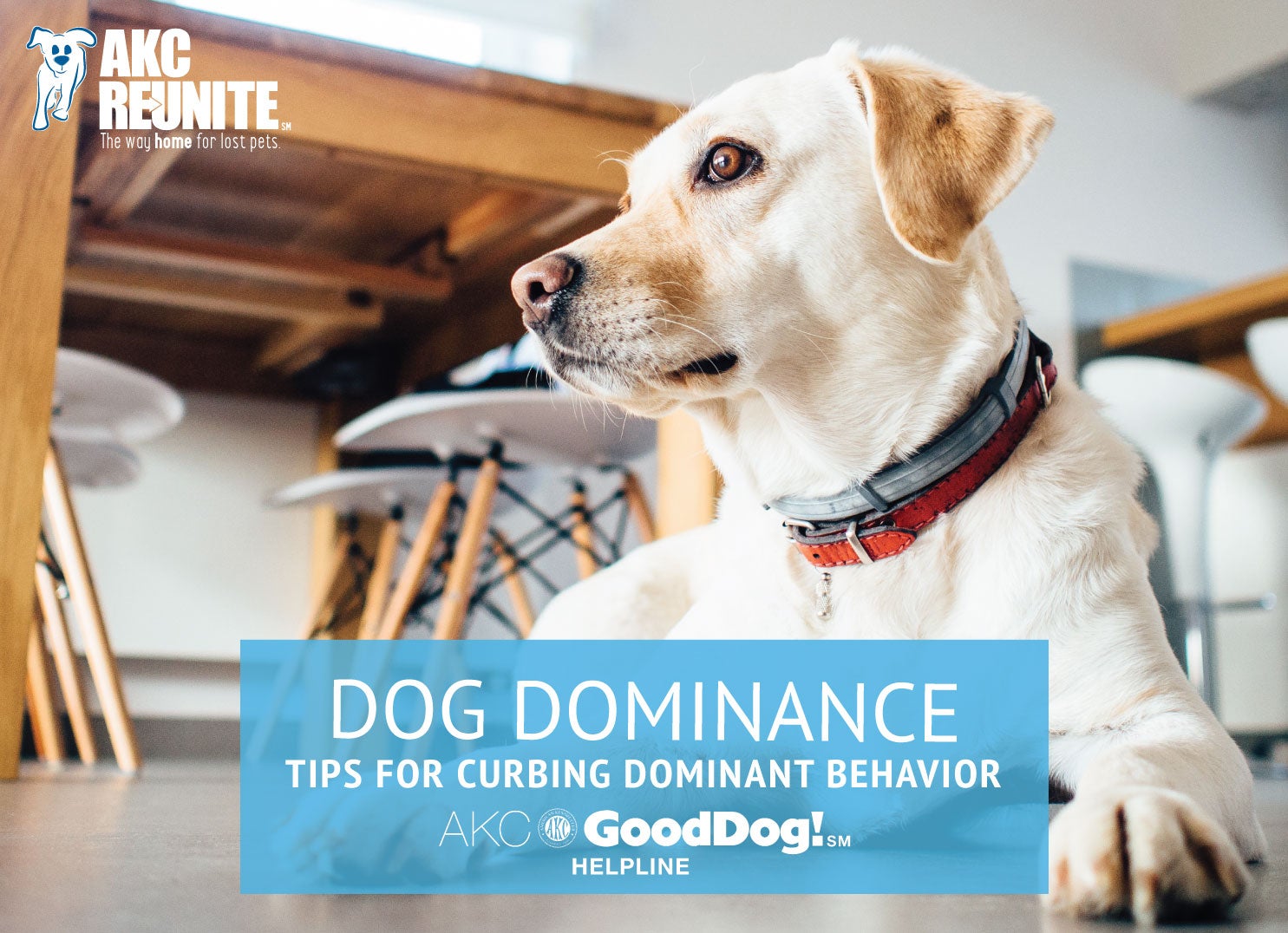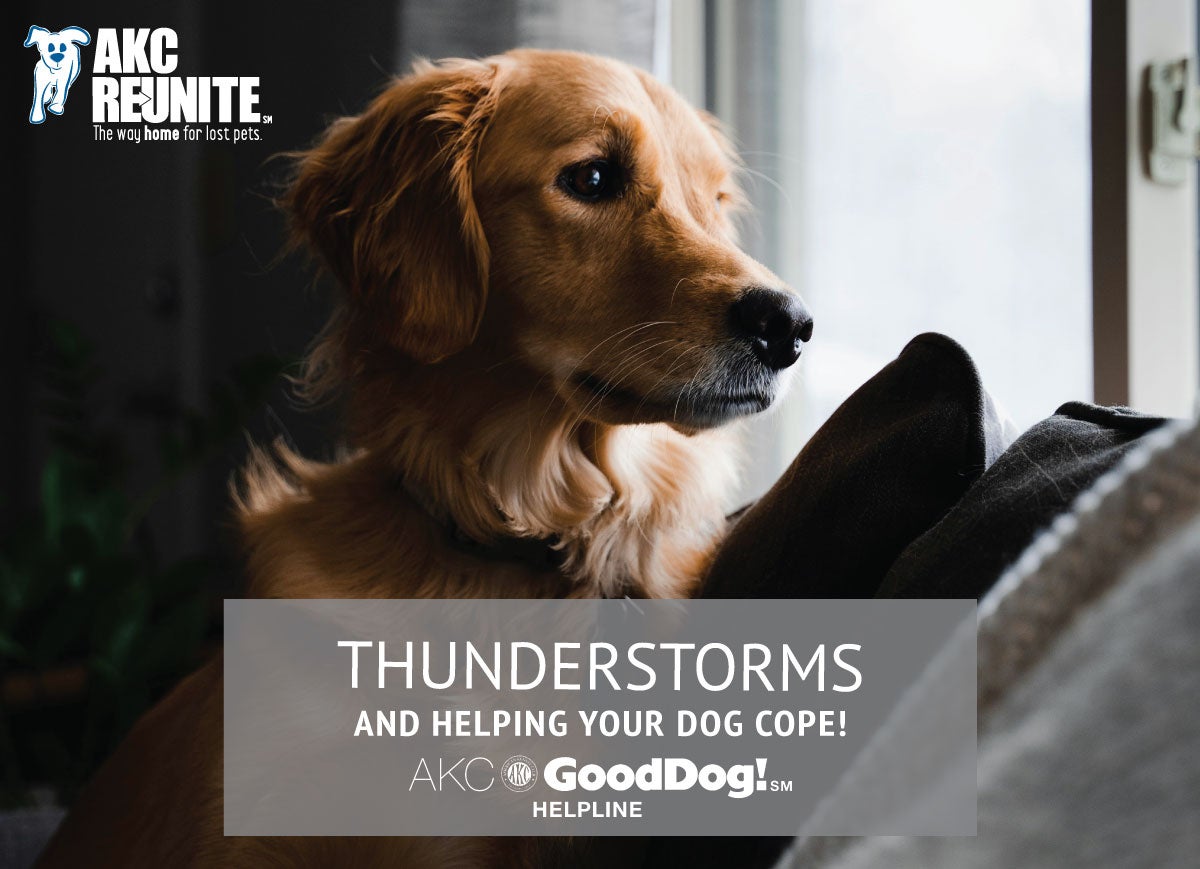Dominance: Tips for Curbing “Dominant” Behavior
Brought to you by the AKC GoodDog! Helpline – the AKC’s 7-day-a-week training support service
By Hilarie Erb, AKC GoodDog! Helpline Trainer
Dogs are not trying to dominate the world with behaviors that we humans think of as bossy. They don’t plot, hold grudges, or get angry. Your dog is simply trying to do what it takes to get what he wants – attention, food, toys, or to relieve his bladder for instance. You can help him become a much more pleasant companion when you show him acceptable ways of “asking” for these.
Keep reading for examples of “dominant” behaviors and how to handle them:
Jumping
When Amber gleefully jumps all over you upon your return to the house, she is trying to get attention and reassurance, not to show you that she’s the boss. Some owners encourage it, which makes it hard for the dog to understand why other people get upset by it.
It is an easy thing to change. You have exactly what your dog wants: hands to pet and kind words to greet. Simply withhold all attention until she is calm. No yelling, no scolding, no eye contact – completely ignore her. Calmly ask for a sit. At first, she’ll be too excited to do it right away, but if you are patient she eventually will. Then you can calmly greet her. What to do when she pops up before you begin greeting? Quickly withdraw all attention and remind her to sit. It will take several tries, but she will soon figure out that to be greeted, she needs to be sitting.
Everyone in the family needs to do the same thing. If there are children and adults who cannot physically handle this, then the stronger family members should do the training until the dog has learned some self-control. Until this happens, give the dog a treat for staying in her crate until she’s calmed down.
Resource Guarding
“My dog growled at me when I took her chew toy away!” Some owners think that a dog should be perfectly willing to give up a prized possession at any time, no questions asked. But would you like it if someone just helped himself to the mouthwatering dessert that was just placed in front of you? Of course not!
If your dog has something unsafe or valuable, you do need to get it away from him. Make a trade: offer a nice treat in exchange. You should practice this with toys or treats. For example, if Rover is chewing on an antler, show him a piece of meat. When he drops the antler, toss the meat a few feet away and take the antler. Then you can give it back. If you practice this regularly, he won’t get upset when he sees you coming toward his prize.
Leash Tugging
Tugging on walks is not a sign of “dominant” behavior. Most dogs have a naturally faster pace than most humans; in fact, they usually move at a steady trot (not a walk) when left to their own devices. Walking as slow as a human doesn’t make sense to your dog, but he does need to learn to walk at your pace.
Take high value treats along on the walk. Reward your dog for being at your side; good things happen to your him when he is there! If yours is a high-energy dog, spend ten minutes playing fetch or tug with him before you leave the house. This will help take the edge off and make it a little easier for you to keep his attention. During some of the walk, allow time for him to do some sniffing – this is a very satisfying pastime for a dog. If he’s very strong and tugging is still a problem, try a head collar or front-snap harness. Just make sure that he gets other chances for vigorous exercise.
House Soiling
“I know Fluffy is mad at me because she sneaks off to the back bedroom to use the bathroom.” Actually, Fluffy thinks she’s doing the right thing in finding a secluded spot away from the main living area to relieve herself. She is making an effort, although it’s not what you want.
You need to show her what to do and give her more opportunities to do the right thing. Go back to housetraining 101. Do not allow her unsupervised access to any part of the house and resolve to take her outside more often. Offer praise and rewards for success. When you think she’s doing well, increase freedom just a little bit at a time, for short periods.
For more tips and advice on training your dog, join the AKC GoodDog! Helpline, a seven-day-a-week telephone support service staffed by experienced dog trainers: www.akcgooddoghelpline.org.
RELATED POSTS
Prepare Pup Paws for Summer Heat
We know that hot weather can be extremely dangerous for dogs. Responsible pet owners are careful about not leaving them in cars, ensuring they have enough water, and in general not exposing them to high temperatures.
How to Curb Open Door Darting
We have done a good job of teaching our dogs that opening the front door is a big deal. No matter what we’re doing, we drop everything and run to the door when the bell rings.
Thunderstorm Terror and Helping Your Dog Cope
April showers might come with thunder, and while most dogs aren’t fazed by it, some are very afraid.






